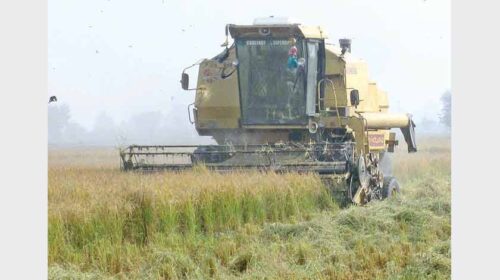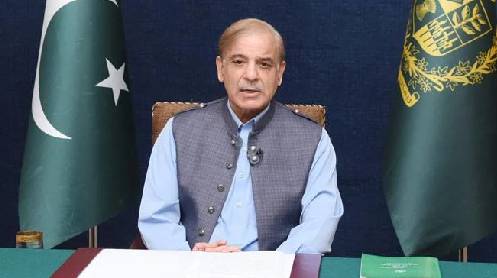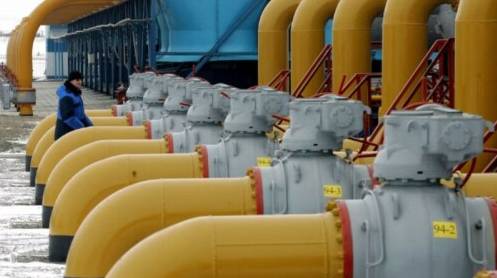The government has launched an ambitious plan for transformation of the agriculture sector. It has embarked upon a short-term plan for the growth of agriculture sector, whereas long-term perspective plan is underway. Several measures have been adapted in this context. The State Bank of Pakistan has set the agriculture credit target of Rs1.7 trillion for the year 2022-23.
Farm modernisation and mechanisation is a crucial element of the programme, considered essential for enhanced crop productivity and diversification, aiming at national food security. Therefore, to encourage manufacturing of affordable tractors domestically, financial, and fiscal concessions have been allowed under the recently announced Auto Industry Development and Export Policy 2021-2026. The policy document also provides incentives for introduction of new products, either a new make or model, of agricultural tractors.
Punjab is providing subsidy of over Rs12 billion and various incentives to farmers for use of modern agricultural machinery under the National Plan, primarily to increase wheat production. Likewise, Sindh is providing Rs3 billion subsidy during the current fiscal year for small farmers, with focus on promoting the use of agricultural farm machinery. In line with the policies initiated by the federal government for the promotion of agriculture and farm yield, several financial and fiscal incentives are being offered to the farmers.
Farm mechanisation implies the use of mechanical technology in various farming operations. Currently, Pakistan has selective farm mechanisation, limited to use of imported combined harvesters and locally manufactured tractors. Thus, per hectare (ha) use of horsepower (hp) in the country remains one of the lowest in the region, at 1.02 hp/ha. Comparatively, China has 4.10 factor of hp/ha. Resultantly, harvests of almost all crops in Pakistan have been low in any year compared with that of the regional countries.
Mechanisation is critically important for ensuring timely field operations, increased productivity, minimised crop losses, and improved quality of produces. It is estimated that mechanisation can increase agriculture produce by 30 percent and reduce the cost by 20 percent. Currently, general-purpose tractors account for most of the farm machinery mechanisation. Local industry produces about 70,000 tractors annually, in the range of 55-85hp. However, there is underutilisation of tractors employed by the farmers due to absence of local availability of its implements for various agricultural activities.
Tractor industry somehow is not interested in manufacturing tractor attachments such as for seeding, sowing, planting, and ploughing. Agricultural tools and implements produced locally, mostly in informal sector, are limited in types and applications and are poor in quality, though cheaper than the imported ones. The farm machinery produced locally also includes power tiller, thresher, reaper, seeder, etc. On the other hand, some 25,000 combined harvesters are in use in the country, which are used for reaping, threshing, and winnowing/sifting operations. These units were imported during the last two decades or so. Most of these are outdated and old combined harvesters, while still working in the field, often breakdown, with availability of spares and after-sales service facility non-existent in Pakistan. This causes significant loss of crops.
One of the key components of modernisation strategy should be availability of farm machinery even to small- and medium-sized farmers who can play an important role in revolutionising agricultural produce and supply chain. Thus, there is profound need for the manufacturing of a variety of agricultural farm machinery locally. Development and adoption of modern, cost-effective agricultural machinery can enhance production and efficiency, and also lead to increasing farmers’ profitability. Infrastructure for manufacturing agricultural machinery is already available, with need for only capital investment and incentives for entrepreneurs. There is no reliable data regarding market size, nonetheless great potential exists since it is an untapped market.
Realising the need for availability of affordable farm machinery, the State Engineering Corporation (SEC) had signed an agreement with the Chinese as early as in April 2000 for progressive manufacturing of farm machinery based on latest technology at one of the SEC industrial companies under technology transfer arrangements.
It was proposed to establish a joint venture with China National Complete Plant Import & Export Corporation (COMPLANT). In the first phase, manufacturing of agricultural machinery including small tractors (8-30 HP), farming vehicles (1-4 tonne capacity, specially designed for farmers) and other related machinery items was planned. Export of these products to the neighbouring countries like Bangladesh and Sri Lanka was also envisaged.
A specialised Pakistani marketing company operating in private sector was associated as partner to the joint venture. The two governments had also agreed to the proposal under the umbrella of Pak-China Joint Economic Commission, emphasising implementation of the project on priority. Nonetheless, the project could not materialise primarily due to lack of political will on Pakistan’s side. Indeed, the proposed joint venture with the Chinese, if established, could have proved a milestone for the development of agriculture sector in Pakistan.
In July 2017, Belarus, which is already producing and marketing tractors here, had also offered Pakistan the cooperation for progressive manufacturing of farm machinery, including advanced harvesters and other agro-machinery. The proposal was revived by the government of Belarus in February 2019 showing keenness to produce farm machinery in Pakistan, but without any results.
At this juncture when the world is going for high-tech agricultural farm machinery, including eco-friendly electric tractors, and application of robotics, we, sadly, continue with outdated farming practices and poor farm management, pushing us back into primitive times.





